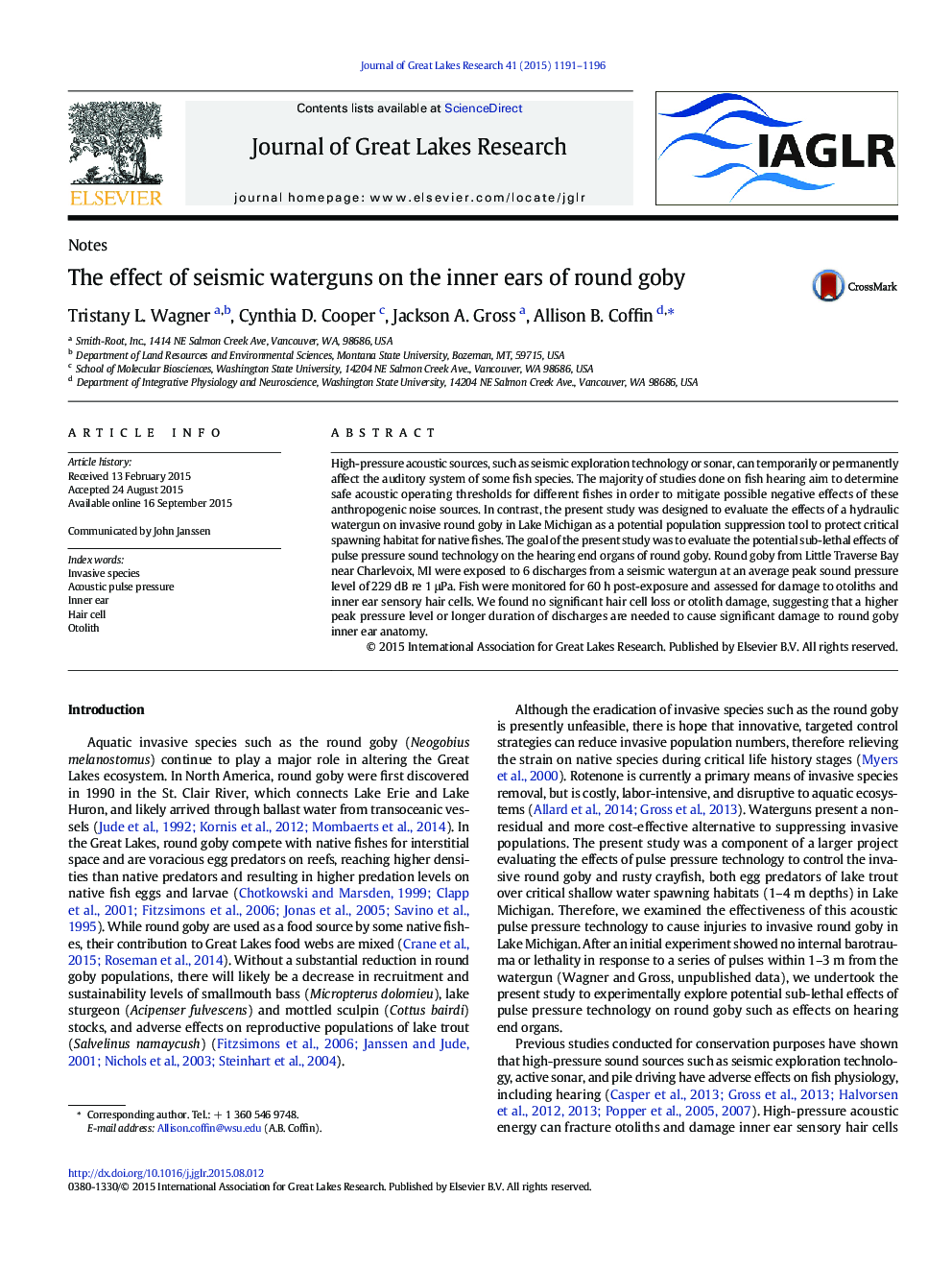| Article ID | Journal | Published Year | Pages | File Type |
|---|---|---|---|---|
| 6304889 | Journal of Great Lakes Research | 2015 | 6 Pages |
Abstract
High-pressure acoustic sources, such as seismic exploration technology or sonar, can temporarily or permanently affect the auditory system of some fish species. The majority of studies done on fish hearing aim to determine safe acoustic operating thresholds for different fishes in order to mitigate possible negative effects of these anthropogenic noise sources. In contrast, the present study was designed to evaluate the effects of a hydraulic watergun on invasive round goby in Lake Michigan as a potential population suppression tool to protect critical spawning habitat for native fishes. The goal of the present study was to evaluate the potential sub-lethal effects of pulse pressure sound technology on the hearing end organs of round goby. Round goby from Little Traverse Bay near Charlevoix, MI were exposed to 6 discharges from a seismic watergun at an average peak sound pressure level of 229 dB re 1 μPa. Fish were monitored for 60 h post-exposure and assessed for damage to otoliths and inner ear sensory hair cells. We found no significant hair cell loss or otolith damage, suggesting that a higher peak pressure level or longer duration of discharges are needed to cause significant damage to round goby inner ear anatomy.
Related Topics
Physical Sciences and Engineering
Earth and Planetary Sciences
Earth and Planetary Sciences (General)
Authors
Tristany L. Wagner, Cynthia D. Cooper, Jackson A. Gross, Allison B. Coffin,
